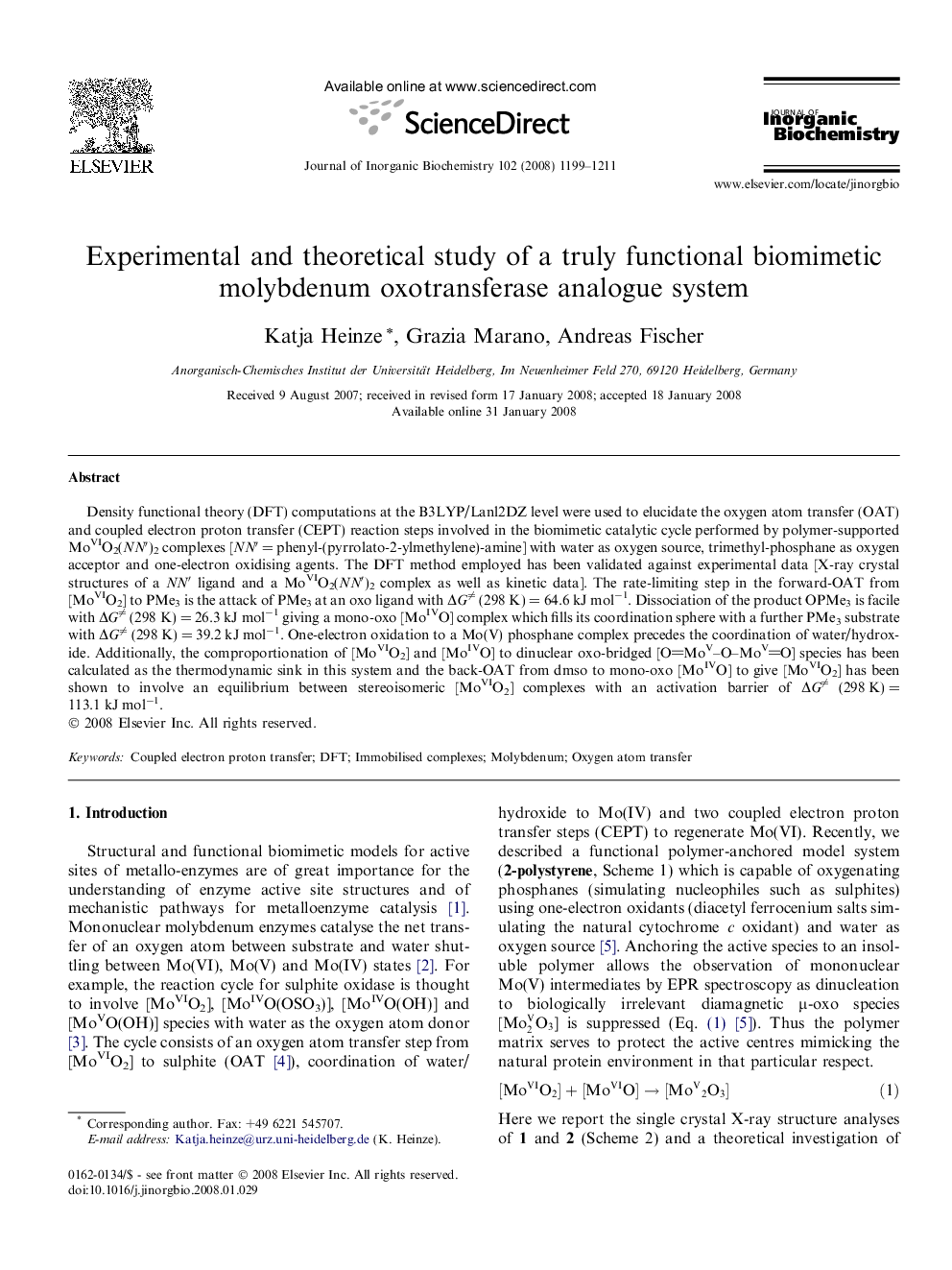| Article ID | Journal | Published Year | Pages | File Type |
|---|---|---|---|---|
| 1316595 | Journal of Inorganic Biochemistry | 2008 | 13 Pages |
Density functional theory (DFT) computations at the B3LYP/Lanl2DZ level were used to elucidate the oxygen atom transfer (OAT) and coupled electron proton transfer (CEPT) reaction steps involved in the biomimetic catalytic cycle performed by polymer-supported MoVIO2(NN′)2 complexes [NN′ = phenyl-(pyrrolato-2-ylmethylene)-amine] with water as oxygen source, trimethyl-phosphane as oxygen acceptor and one-electron oxidising agents. The DFT method employed has been validated against experimental data [X-ray crystal structures of a NN′ ligand and a MoVIO2(NN′)2 complex as well as kinetic data]. The rate-limiting step in the forward-OAT from [MoVIO2] to PMe3 is the attack of PMe3 at an oxo ligand with ΔG≠ (298 K) = 64.6 kJ mol−1. Dissociation of the product OPMe3 is facile with ΔG≠ (298 K) = 26.3 kJ mol−1 giving a mono-oxo [MoIVO] complex which fills its coordination sphere with a further PMe3 substrate with ΔG≠ (298 K) = 39.2 kJ mol−1. One-electron oxidation to a Mo(V) phosphane complex precedes the coordination of water/hydroxide. Additionally, the comproportionation of [MoVIO2] and [MoIVO] to dinuclear oxo-bridged [OMoV–O–MoVO] species has been calculated as the thermodynamic sink in this system and the back-OAT from dmso to mono-oxo [MoIVO] to give [MoVIO2] has been shown to involve an equilibrium between stereoisomeric [MoVIO2] complexes with an activation barrier of ΔG≠ (298 K) = 113.1 kJ mol−1.
